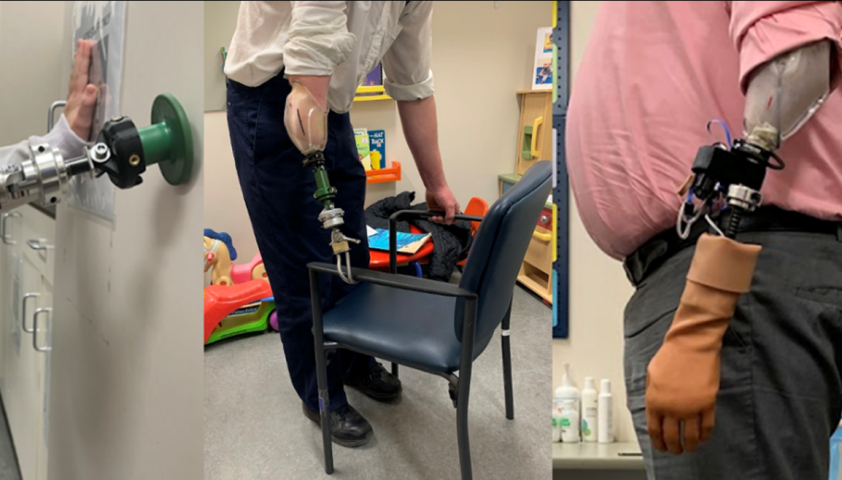The Future of Orthotics and Prosthetics is Here
Seeing a child's face light up as they watch a 3D model of their arm appear on a screen is a meaningful reward for Holland Bloorview’s Orthotics and Prosthetics (O&P) Digital Technology Team. And for Elaine Ouellette, Team Lead and Certified Prosthetist, this "cool factor" is a testament to the transformative and innovative work happening every day.
Established in 2019 through a joint effort between the O&P department and the Bloorview Research Institute (BRI), the program is powered by the generous support of the Holland Bloorview Foundation and its donors. And it isn’t just pushing the boundaries of what's possible, it's revolutionizing the way care is thought about and delivered to kids and youth with disabilities.
This past year, the program secured a major $470,000 research grant from the Canadian Institutes of Health Research (CIHR).Thanks to this grant, the research team is embarking on a study to compare 3D printed ankle-foot orthotics with the traditional plaster-molded devices.
Harry Sivasambu, research manager at the PROPEL Lab, is thrilled by this accomplishment.
“The partnership between research and clinical was really critical in getting this off the ground in the very beginning,” he says. “But the only reason we were able to get that grant is because of all the work we were able to do through the Foundation grants and the dedicated staff, clinicians, and researchers who are doing the work.”
Elaine agrees with Harry, adding that all of these resources are vital — not just for the final outcomes but for all the research needed to get there.
“In the digital world there isn't a lot out there that focuses specifically on pediatrics. This program lets us look into things that maybe the adult population isn't necessarily looking at — and specifically with upper limb prosthetics,” says Elaine. “We're able to fill that that gap in research.”
The program’s collaborative approach doesn’t stop at Holland Bloorview’s doors. They partner with Boundless Bracing in Mississauga, which has advanced 3D printing technology, and Nia Technologies, a non-profit software company for prosthetics and orthotics. These partnerships boost the program’s abilities, keeping them at the forefront of technology.
“We have quite a few projects on the go, and what informs which projects we do and what we move forward, all comes back to the clinical needs,” says Elaine.
“And once we identify those [knowledge gaps], we work together with the research department to come up with a research question and all the objectives surrounding that. Overall, the focus is on what the client needs and what can be applied in our daily practice.”
One of those exciting projects is the adjustable diagnostic forearm which attaches to trial elbow sockets. Before this device, clients had to wait until the end of a long process to see their final prosthesis. Now thanks to this new tool, they can visually preview their prosthesis and give feedback earlier on, which helps promise a better fit and optimize function.

The O&P Digital Technology Program is interested in more than technology. The team hopes the research will improve accessibility, reduce wait times and have a broader impact, ultimately extending beyond the hospital.
“On the research side at least, we're hoping to make a significant impact to science and disseminate our knowledge through research publications and conference presentations,” says Harry.
“From this research, we've already published three journal articles, and we have two more in the works.”
Looking to the future, the team hopes to include more artificial intelligence into their workflow to make the processes even more efficient and precise. This means more personalized care and faster service, which Elaine adds, is especially important for kids and youth who need more frequent adjustments to their orthotics or prosthetics as they grow.